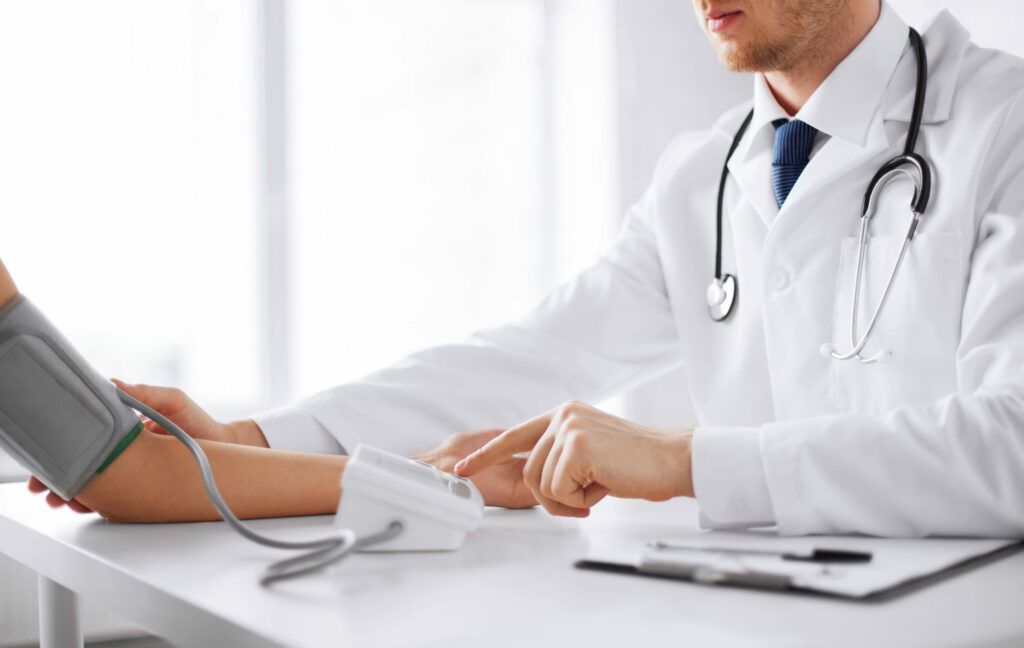Health Articles
Knowledge
High blood pressure in young adults. Part 1

High blood pressure in young adults. Part 1
When you come in for a checkup with the hospital, whether it’s headache, fever, toothache, fall injury, insomnia or to give birth, everyone will receive a blood pressure test. Sometime the value might be higher than normal and we would give ourselves answers along the line of feeling sick, hunger, anxiousness, stress, etc. and when we come in for our yearly health checkup and our blood pressure level is higher than normal again, we would repeat the answers we had previously given ourselves.
So how do we stop to consider whether the number shown from the high blood pressure test that we receive pre-consultation is accurate and is something we need to be concern about? What we recommend is the come to the hospital again in about 2 weeks, after we get well from the sickness, specifically for blood pressure check. You should do the check when you get to rest at the hospital for at least 5 mins and be of a stable and calm mood for the most accurate measurement. Some people when taken measurement at the hospital the blood pressure level may be high but when they check the level at home everything is normal. We call this white coat hypertension which is the condition that some patient group is anxious around white gown so they need to have pressure measuring equipment at home that they can do a self-measurement to verify their blood pressure level.
At what age should we start to be concern about high blood pressure?
In the past, we would have recommended that people about the age of 40 should start to be concern about high blood pressure as the small artery start to deteriorate with age. However, with today lifestyle of desk jobs, increasing stressful environment, lack of active activities or exercise, higher sodium contents in food, obesity, increase consumption of alcoholic drinks and family history of high blood pressure, the condition of high blood pressure is found in patients of much younger age than before.
The cause high blood pressure stems from many factors such as genetics and working/living environment. A small group of patients 5-10% have high blood pressure that stem from verifiable sources and that when treated can lower their blood pressure without the need for medication, this is called secondary hypertension.
The conditions of patients to check for high blood pressure
Starting with patients below the age of 30, especially patients without family history of blood pressure. Patients with extremely high blood pressure level or blood pressure that can elevate very quickly. Patients with difficulty controlling blood pressure level even with the help of medication. Health implication from high blood pressure such as thicker than normal heart muscle, bleeding in the brain, kidney disease and other disease that can arise suspicion. Firstly, we need to take a look at the type of medication currently being used by the affected patients. Some medication causes a raise in blood pressure such as anti-inflammatory painkiller in the group of NSAID such as arcoxia Celebrex brufen. Steroid, drugs such as cocain and contraceptive medication.
Common disease from high blood pressure are kidney disease, back pain, bubbly urine and swollen leg or foot. This can be check through blood or urine test. Another disease that should not be overlooked is obstructive sleep apnea. Do not take snoring lightly as snoring can cause a state of low oxygen level in the blood and the buildup of carbon dioxide in the body which can increase blood pressure and overtime can cause high blood pressure and thickening of lower right part of heart muscle. If you or someone you know experience head ache in the morning, mid-day drowsiness, snoring or periodic pause of breathing please come in for a check with the doctors.














